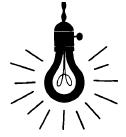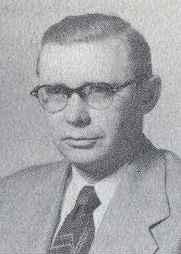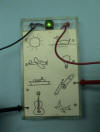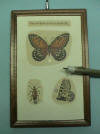|

"Inventions"
My experience with inventing may help would-be inventors. I'll
share some of my original ideas here and let you decide why market success
for my "inventions" always eluded me. To see
nine brief articles on the
invention process, which I edited for the
Inventors' Journal, click
here.
Make water flow up hill: When I was a teenager I  kept a file
folder marked "inventions." One novel innovation caused me to bet my
Logan kept a file
folder marked "inventions." One novel innovation caused me to bet my
Logan Senior High School (Utah) physics
teacher, Mr. Harry Kemp, that I could make water flow up hill.
He good naturedly accepted the bet. At the appointed demonstration time,
with fellow students looking on, I
showed
him how to do it. Although
I sort of won the bet, I never could find a practical application for my
"invention," because it was more practical to accomplish the same thing with
a hydraulic ram. Senior High School (Utah) physics
teacher, Mr. Harry Kemp, that I could make water flow up hill.
He good naturedly accepted the bet. At the appointed demonstration time,
with fellow students looking on, I
showed
him how to do it. Although
I sort of won the bet, I never could find a practical application for my
"invention," because it was more practical to accomplish the same thing with
a hydraulic ram.
Anti-Gravity: Also during high school I enthralled by the idea of
anti-gravity space travel. Of course, I could not reduce the idea to
practice, because it was an imaginary concept not founded on any known
physical process. None-the-less, I used the idea for a 1955 English class
writing assignment. I could never figure out why that paper generated enough interest at
my high school that I was interviewed by two strangers about the source of
my ideas in the paper. As a 15 year-old youth, I
worried that they thought I may have cheated by plagiarizing the story. They
were a bit mysterious in the way they interrogated me. I answered all their
questions, but couldn't tell if they were satisfied with my answers. I always
wondered what it was all about, so I kept the story that I called
"To
the Moon" (PDF 0.50 MB) in my filing system. This happened two years before
Russia launched Sputnik into space.
 The United States landed the first men on
the moon on July 20, 1969. My little fictional story put the first men on
the moon on September 3, 1976, which coincidentally, turned out to be the date when
Viking 2 made a soft landing on Mars and began sending photos back to Earth. Real space travel used rocket power, but wouldn't anti-gravity be a
great way to travel, if the laws of physics allowed it?
(Think of the Absent Minded Professor [1961] and his "flubber" powered car.) The United States landed the first men on
the moon on July 20, 1969. My little fictional story put the first men on
the moon on September 3, 1976, which coincidentally, turned out to be the date when
Viking 2 made a soft landing on Mars and began sending photos back to Earth. Real space travel used rocket power, but wouldn't anti-gravity be a
great way to travel, if the laws of physics allowed it?
(Think of the Absent Minded Professor [1961] and his "flubber" powered car.)
Urban Design: One idea stored in that "inventions" file folder was an urban design
where streets had
no stop signs or
stoplights.
 Each block was octagonal in shape with one-way traffic going around the
block. Instead of straight streets with traffic-halting intersections, the
streets would gently undulate through the neighborhoods. Traffic would
diverge and merge at at intersections, with vehicles always heading in the
same direction. It was a whimsical idea, jotted down, toyed with, tossed in
a file, and never presented for serious assessment to those who deal with
problems of urban design and traffic flow. Each block was octagonal in shape with one-way traffic going around the
block. Instead of straight streets with traffic-halting intersections, the
streets would gently undulate through the neighborhoods. Traffic would
diverge and merge at at intersections, with vehicles always heading in the
same direction. It was a whimsical idea, jotted down, toyed with, tossed in
a file, and never presented for serious assessment to those who deal with
problems of urban design and traffic flow.
Teaching Aids: As my children were growing up, I made "learning
machines" for them.
 Later
we called them "teaching aids." The
simplest was a card holder made out of
plastic, electrical contact screws, wires, a green light, and two electrical
probes. I made a variety of learning cards for my kids and was impressed
with the way
it helped them learn. I
wondered if my teaching aid could be patented and marketed. This curiosity led me to
discover patent attorneys (and their fees), the voluminous documents in the
U.S. Patent Office, and the difficulty in obtaining a patent. Later
we called them "teaching aids." The
simplest was a card holder made out of
plastic, electrical contact screws, wires, a green light, and two electrical
probes. I made a variety of learning cards for my kids and was impressed
with the way
it helped them learn. I
wondered if my teaching aid could be patented and marketed. This curiosity led me to
discover patent attorneys (and their fees), the voluminous documents in the
U.S. Patent Office, and the difficulty in obtaining a patent.
 It also led me
discover the Salt Lake City, Utah based "Intermountain Society of
Inventors and Designers." I learned a lot from affiliating with It also led me
discover the Salt Lake City, Utah based "Intermountain Society of
Inventors and Designers." I learned a lot from affiliating with
 inventors and "wan-a-be" inventors in that society. Eventually I became
president of the Society and spearheaded the publication of a monthly
"Inventors' Journal,"
(PDF 2.09 MB)
which described the activities
of the Society. inventors and "wan-a-be" inventors in that society. Eventually I became
president of the Society and spearheaded the publication of a monthly
"Inventors' Journal,"
(PDF 2.09 MB)
which described the activities
of the Society.
 During this time, I modified and
improved various versions of my "teaching aids." I even demonstrated an During this time, I modified and
improved various versions of my "teaching aids." I even demonstrated an
 LED (light emitting diode) version at an
"Invention Convention" sponsored by the Society at the Salt Palace in Salt Lake City
in 1973. LED (light emitting diode) version at an
"Invention Convention" sponsored by the Society at the Salt Palace in Salt Lake City
in 1973.
The best version was developed in collaboration with
a friend and neighbor, Joseph M. Kirton,
who was an experienced inventor. It used conductive ink
 to activate a
single, wireless probe, which learners used to make selections among possible answers. I
assigned my rights in this invention over to his company, because at that
stage of my life, I had neither the financial wherewithal nor the time
needed to reduce
the invention to practice and market it. We received a
patent (PDF 0.69 MB) for the invention. Years later, I was pleased to see a commercial
product that seemed to use the conductive ink concept for a children's
learning game. Later, in my career as an
educator, I watched the development
of powerful, interactive, multimedia learning software that made my teaching aids look extremely primitive. to activate a
single, wireless probe, which learners used to make selections among possible answers. I
assigned my rights in this invention over to his company, because at that
stage of my life, I had neither the financial wherewithal nor the time
needed to reduce
the invention to practice and market it. We received a
patent (PDF 0.69 MB) for the invention. Years later, I was pleased to see a commercial
product that seemed to use the conductive ink concept for a children's
learning game. Later, in my career as an
educator, I watched the development
of powerful, interactive, multimedia learning software that made my teaching aids look extremely primitive.
Light-Tag Game: One summer night, as I watched my children
and their friends chase each other around at night, using flashlights, I
thought of a game, which I called, "Plazer." It involved using light sensors
to detect when a light beam hit a player and signaled that the player had
been "hit." I couldn't reduce the idea to practice, but I submitted the idea
to the WHAM-O corporation for their consideration. Since the submission to WHAM-O was
unsolicited, I wasn't surprised that I never received a reply. I was pleased
to watch the development of similar games over the years. Decades later I
enjoyed watching youth play "Laser Tag" games at night.
[Top] [Home] |